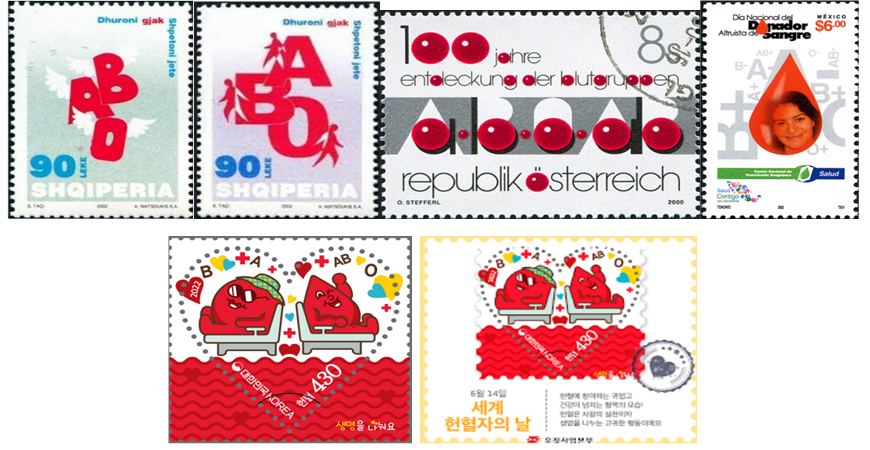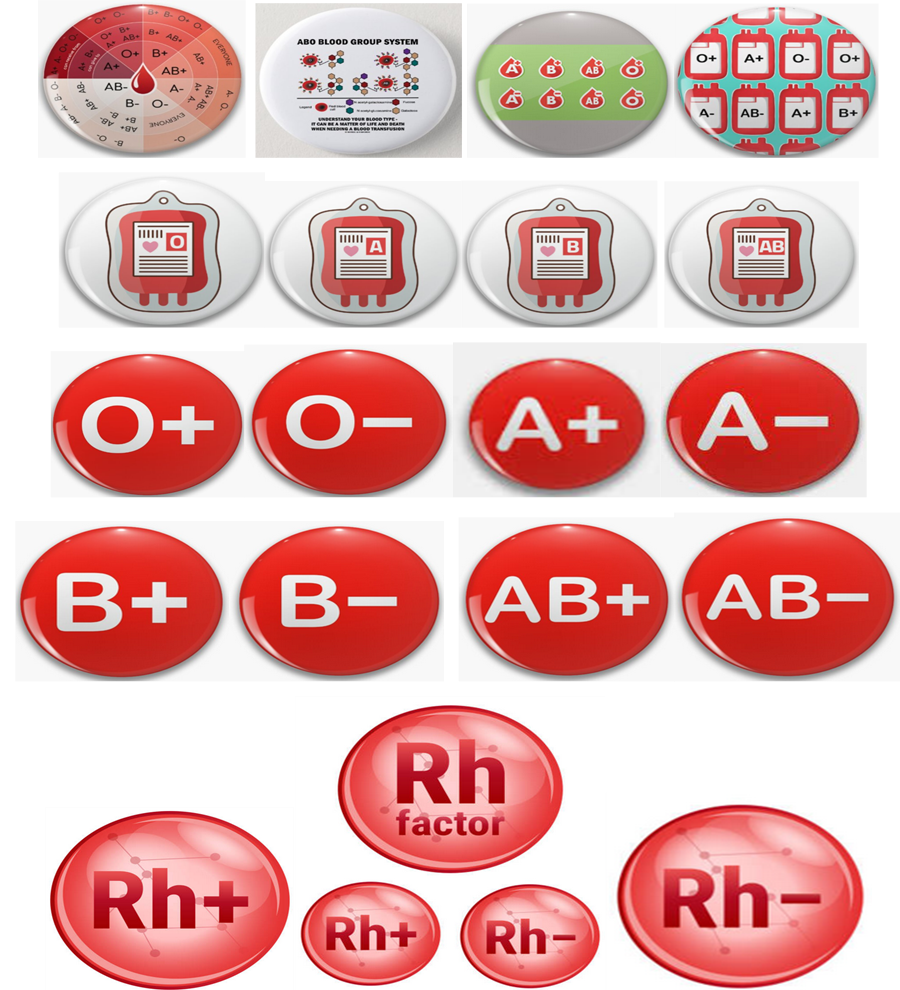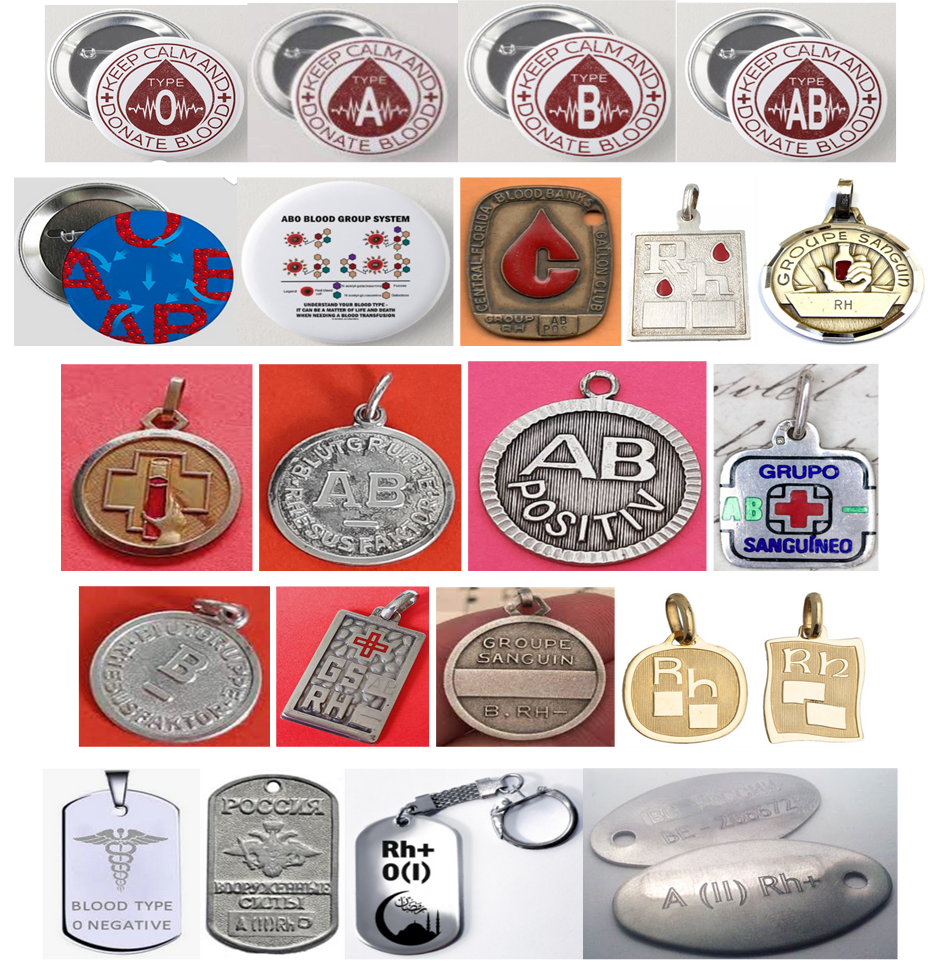Current Issue : Article / Volume 3, Issue 1
- Research Article | DOI:
- https://doi.org/10.58489/2837-3332/007
Blood Types and Human Rh Factor: History, Heroes, In Reflection of a Number of Collectibles
- Department of Medical and Biological Foundations of Sports and Physical Rehabilitation, The Petro Mohyla Black Sea State University, Nikolaev, Ukraine.
Dr. Konstantin Anatolyevich Bugaevsky
Bugaevsky KA. (2024). Blood Types and Human Rh Factor: History, Heroes, In Reflection of a Number of Collectibles. Journal of Clinical Surgery and Reports 3(1). DOI: 10.58489/2837-3332/007
© 2024 Bugaevsky KA, this is an open-access article distributed under the Creative Commons Attribution License, which permits unrestricted use, distribution, and reproduction in any medium, provided the original work is properly cited.
- Received Date: 15-06-2024
- Accepted Date: 05-07-2024
- Published Date: 12-07-2024
blood types, Rh-factor, heroes, philately, phaleristics, numismatics, bonistics, philumenia, screenshots.
Abstract
The article presents the results of a study conducted by the author on the reflection, in a number of collecting means, such as philately, phaleristics, numismatics, bonistics and philumenia, of the issue of blood types and human Rh- factor, its history, heroes, dynamics of development and place, among other medical areas.
Aim of study
The purpose of this article is to present the obtained materials, conducted by the author of the study, reflecting the degree of representation, in such collecting means as philately, numismatics, bonistics and phaleristics, thematic collection materials dedicated to blood types and Rh-factor, its history and scientists who have made significant scientific and practical contributions, in this branch of medicine.
Hypothesis of the study
The purpose of this article is to present the obtained materials, conducted by the author of the study, reflecting the degree of representation, in such collecting means as philately, numismatics, bonistics and phaleristics, thematic collection materials dedicated to blood types and Rh-factor, its history and scientists who have made significant scientific and practical contributions, in this branch of medicine.
Introduction
The formation and dynamic processes of the development of medicine are very educational and historically difficult processes. In almost all the first human communities and early states, people appeared whose area of interest concerned the structure and functioning of the human body, as well as its injuries and diseases. And, always, at all times of human history, there have been people who, more or less successfully, have studied these issues, these were the first anatomists, physiologists and doctors. The history of medicine knows many examples of all these events and processes. The inquisitive minds of these pioneers and creators of these important medical areas, as a result of their painstaking work and tireless searches, from time to time, led to fundamental discoveries in one direction or another and/or field of the then medical science. This is directly related to the issues of opening the circulatory system in humans and other living organisms [1, 5]. Published in 1901 in the Austrian medical journal Wiener klinische Wochenschrift, an article by Karl Landsteiner, an assistant at the Department of Pathanatomy at the University of Vienna, “On the phenomena of agglutination of normal human blood,” made it possible to transform blood transfusion from a risky and sometimes fatal medical procedure into an ordinary medical procedure. A special place in matters of blood transfusion is the process of determining for each patient his own blood type and Rh factor. Based on these studies, Karl Landsteiner concluded that there are three blood groups in humans: 0, A and B. For this discovery, he was awarded the Nobel Prize in Physiology or Medicine in 1930. In 1940, together with Alexander Salomon Wiener, he discovered another antigen in red blood cells, which he called the Rh factor, since it was found in the serum of rabbits immunized with the blood of an Indian monkey, the rhesus monkey. The fourth group (AB) was discovered later by a Czech doctor and scientist, Jan Jansky [1, 4, 10-14]. Among the many researchers of the blood transfusion process, two research scientists occupy a special place - the Austrian Karl Landsteiner and the Czech Jan Jansky [1-15].
In 1907, Czech Jan Jansky named blood groups I, II, III and IV according to the frequency with which they occurred in the population. And William Moss in Baltimore (USA) in 1910 described four blood groups in reverse order - IV III, II and I. Moss's nomenclature was widely used, for example, in England, which led to serious problems. Ultimately, this issue was resolved once and for all in 1937 at the meeting of the International Society of Blood Transfusion in Paris, when the current terminology “AB0” was adopted, in which blood groups are called 0 (I), A (II), B (III), AB (IV). Actually, this is Landsteiner’s terminology, in which a fourth group was added, and C turned into 0 [1-4, 10-14].
Issues of blood transfusion are directly and indirectly interconnected with issues of donation, procurement and processing of blood and its components, as well as transfusions of blood substitutes. The issues of donation, as reflected by various means of collecting, are so interesting and voluminous that more than a dozen research articles can be devoted to them. But this is another, very voluminous topic, which the author of this study plans to tackle in a number of his next research articles.
Material and Methods
When writing this research article, its author used research methods such as literary critical analysis of all available sources of information on the issue he was studying, both domestic and foreign. Also, a large search and research work was carried out to find, study and analyze all other available author's research articles, thematically related to the issues of blood transfusion, the history of this issue and its heroes, presented on the Internet, both on scientific, medical sites and the Internet -pages, on the Internet. All found illustrative materials were subjected to careful selection, ordering and systematization, with their subsequent conversion, by the author of this article, into screenshot copies, both color and black and white. In order to comply with copyright and to avoid accusations of plagiarism, the author strictly and without fail strictly recorded the places of borrowing and Internet addresses, the illustrative and text materials used in this article, when writing it.
I would like to add that the author of this research article, starting in 1984, for 15 years, was a transfusiologist and head of a large department of blood transfusion and transfusiology at the central city clinical hospital, the city of Novaya Kakhovka, Kherson region, Ukraine. Also, starting in 1974, as a medical student and already working as a practicing doctor, he was a donor and systematically donated blood. He is an honorary donor of the USSR and Ukraine, having donated his shelter more than 500 times over all these years. He also committed by being a donor. 7 times, direct blood transfusion, to patients in need, giving them my own blood.
Results and Discussion
In 1940, doctors Karl Landsteiner (1868-1943) and Alexander Wiener identified a serum that reacts with most types of human red blood cells and leads to their agglutination - sticking together. This serum was obtained from the red blood cells of rhesus monkeys. Therefore, the discovered protein was called the Rh factor.In 1901, he discovered the ABO blood groups (erythrocyte antigens and antibodies - agglutinins) (currently this is the AВН system). His work marked the beginning of medical typing of blood for the purpose of transfusion. In 1929, K. Landsteiner, in collaboration with Philip Levin, discovered the blood groups of the MNP system. Two years later, his students A. Sturli and A. Dekastello discovered the fourth blood group - AB. In 1940, K. Landsteiner, together with Alexander Wiener, discovered the Rh factor and its significance both in blood transfusions and in the development of transplacental disease of newborns [1-5, 10-15]. The figure 6 shows a small philatelic selection consisting of 26 screenshot copies dedicated to Karl Landsteiner (1868-1943) [6-10].












Fig 6: Philatelic selection dedicated to Karl Landsteiner
Further, in Figure 7, a small phaleristic selection is presented, in the amount of 14 copies of screenshot copies (commemorative medals and award badges and commemorative coins), dedicated to the memory of Karl Landsteiner [16-20]. All commemorative medals are presented both in obverse (front part of the medal) and in reverse (rear, back part of the medal, minted in different years and different events, from different metals.






Fig 7: Numismatic and phaleristic collections dedicated to the memory of Karl Landsteiner
Figure 8, in the bonistics section, shows a commemorative Austrian banknote with a denomination of 1000 Austrian schillings. On the obverse of this banknote, a portrait of a scientist is depicted, and on its reverse, Karl Landsteiner is depicted in the process of research work in his laboratory [21].

Fig 8: Austrian banknote dedicated to Karl Landsteiner
Continuing my story about blood groups and their discovery, I would like to present a selection of collection materials dedicated to such a scientist as Czech scientist and researcher Jan Jansky (1873-1921). Thus, in Figure 9, a Czech postage stamp (2023) is presented, dedicated to the 150th anniversary of the great Czech and world scientist and researcher, who introduced the world to four blood types, and made a scientific revolution in matters of blood transfusion and donation [12-14]. Also, in the same figure 9, there are presented, in obverse and reverse, 19 screenshot copies, commemorative gold, silver and bronze Czech medals, and 2 tails/lapel badges for two of these medals, postage envelopes, stamps, postmark and postage thematically dedicated to Jan Jansky and his teaching about the four blood groups person [22-29].

Regarding the issues of blood transfusion, one cannot help but touch upon the issue of representation of blood groups, as reflected by different means of collecting. At the beginning, philatelic materials (postage stamps, envelopes) will be presented, depicting symbols/formulas of the four human blood groups - the so-called AB0 system [1-10. Figure 9 shows a small philatelic selection dedicated to the four human blood groups [10-15].


Fig 13: Human blood groups, as reflected by philately
Continuing the theme of reflecting human blood types in various means of collecting, I would like to present a large faleristic selection (commemorative thematic badges, breast medals and tokens), which carry, on their front part (obverse), the formulas of the four human blood groups - in total... copies screenshot -copies [30-33]. Also, in this faleristic selection, keychains-tokens are presented, incl. and soldiers', indicating on them the different blood types of their owners [30-33].


Fig 14: Human blood groups as reflected by phaleristics
This concludes the first part of a large author's research article devoted to human blood transfusion, its history and heroes, reflecting a number of collecting means, such as philately, phaleristics, philumeny, numismatics and bonistics. The author is preparing a new, second research article devoted to the same issue. This is primarily due to the fact that this is a very large article in terms of volume, content and number of illustrations used, and the author has not yet presented some interesting facts.
Conclusions
- The author of this research article managed, quite fully, to fulfill his stated goal of research and writing this article.
- Text and multiple illustrative materials presented by the author of the study fully confirm the hypothesis of this study, put forward and presented by the author, the hypothesis that there is a fairly large number of a wide variety of collection materials dedicated to blood transfusion, its history and heroes and their achievements, in this field of medicine.
- The use by the author of this research article of numerous screenshot copies of collection materials as illustrative material has greatly embellished and enriched this article, and is a new, rather exclusive method of presenting materials.
- A large number of new materials from the research he is conducting, not yet published by the author, require continuation in new articles on blood transfusion, which will be done by the author in the near future.
References
- Karl Landsteiner and blood groups: URL http:// https:// kazpravda.kz › 148-let-nazad-rodilsya-otkryvshiy (access date 14.06.2024).
- Historical aspect of transfusion medicine URL http:// SlideShare (access date 14.06.2024).
- PROF. DR. KARL LANDSTEINER URL http:// eBay (access date 14.06.2024).
- Forgotten Czechs – Jan Jánský URL https://www.czechleaders.com (access date 14.06.2024).
- Karl Landsteiner discovered and typed blood groups. Aurora Israel URL http:// https://aurora-israel.co.il Karl-Landsteiner-discovered (access date 14.06.2024).
- Austria 2000 Maxi card, Discovery of the blood groups by Karl Landsteiner
- Blood transfusion historic hi-res stock photography and images URL http:// Alamy (access date 14.06.2024).
- A stamp and a first day cancellation showing Landsteiner URL https:// www.researchgate.net (access date 14.06.2024).
- Stamp: Karl Landsteiner (1868-1943) URL https:// www. Colnect (access date 14.06.2024).
- Donation of Blood and Blood Transfusion URL https:// www.researchgate.net (access date 14.06.2024).
- LF Haas Karl Landsteiner (1868-1943) URL https://doi.org/ 10.1136/jnnp. 72.3.355 (access date 14.06.2024).
- JR Storry Human blood groups: inheritance and importance in., 2023 RL https:// pubmed.ncbi.nlm.nih.gov (access date 14.06.2024).
- Bugaevsky K.A., Bugaevskaya N.A. Blood transfusion and transfusiology in collecting // Bulletin SMUS74. 2017. №2 (17). URL: https://cyberleninka.ru (access date: 14.06.2024).
- The history of blood transfusion: how it all began! URL: http://krasnayakrov.ru/donorstvo/istoriya-perelivaniya-krovi.html (access date: 14.06.2024).
- Karl Landsteiner, Discovery of Rh factor URL http:// eBay (access date: 14.06.2024).
- Karl Landsteiner timelin URL http:// Timetoast (access date: 14.06.2024).
- NumisBids: Numismática Leilões Medalha - Karl Landsteiner 1868-1943 URL http:// Todocollection (access date: 14.06.2024).
- Discoverer of blood groups medallion - per scan was listed for as Other - Karl Landsteiner 1868 - 1943 URL https://www.bobshop.co.za (access date: 14.06.2024).
- Dr. Karl LastDodoNETHERLANDS PROF. DR. KARL LANDSTEINER, Netherlands Dutch Red Cross, 2 Medals B6 URL http:// eBay (access date: 14.06.2024).
- Medaillen Karl Landsteiner Bronze und Silber Deutsche Rotes Kreuz H393 URL http:// Antik-KW (access date: 14.06.2024).
- 1000 Schilling (Karl Landsteiner) - Austria URL http:// Numista (access date: 14.06.2024).
- Stamp 2023, Czech Republic Jan Jansky 1v, 2023 - Collecting Stamps - URL http:// Freestampcatalogue.com (access date: 14.06.2024).
- Plaketa - Jan Janský URL http:// Sbazar (access date: 14.06.2024).
- Jansky - the Czech scientists URL http:// České překlady (access date: 14.06.2024).
- Czechoslovakia Red Cross Medal & Badge JAN JANSKY decoration URL http:// eBay (access date: 14.06.2024).
- TABLE MEDAL JAN JANSKY 1873-1921 CZECHOSLOVAKI URL http:// eBay (access date: 14.06.2024).
- 200 KČ (2021) Jan Jánský (Proof kvalita) URL http:// Knihkupectví Tycho (access date: 14.06.2024).
- 2 x MEDAILE ZA DAROVÁNÍ KRVE URL http:// Aukro (access date: 14.06.2024).
- Silver coin 200Kč 2021 Jan Janský proof URL http:// Czech Mint (access date: 14.06.2024).
- Blood Type / Group Rh URL http:// Pinterest (access date: 14.06.2024).
- The Badge with Blood Group and Rh URL http:// Dreamstime (access date: 14.06.2024).
- My Blood Type is A, A, B, B, O URL http:// Etsy (access date: 14.06.2024).
- Blood Type Badges & Pins URL http:// Zazzle (access date: 14.06.2024)


